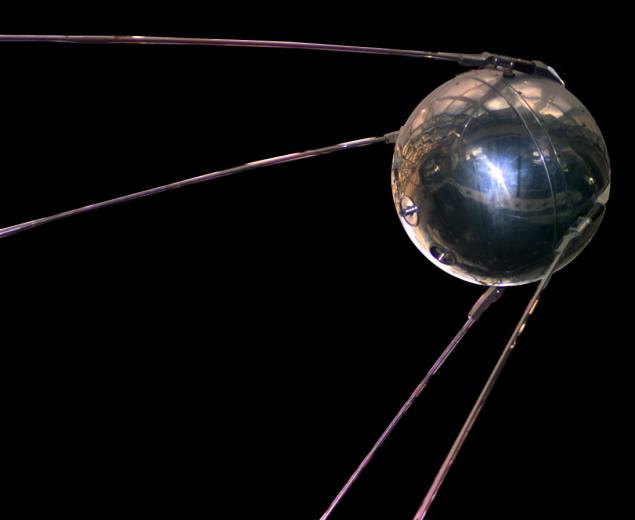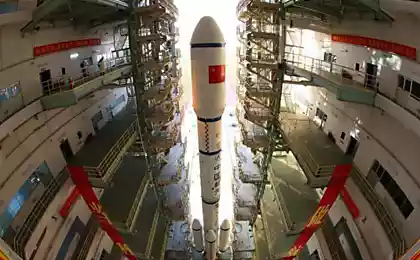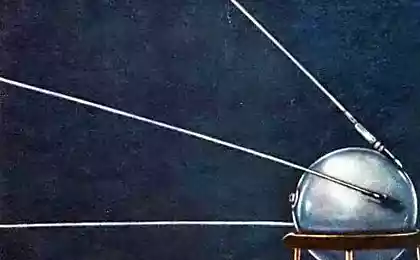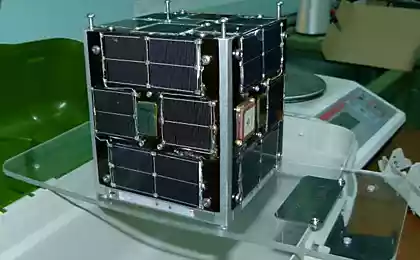1110
57 years ago launched the world's first artificial satellite of the Earth

October 4, 1957 the Soviet Union orbited the Earth's first artificial satellite. The satellite was called PS-1, and the orbit of its conclusions booster R-7, from the Baikonur Cosmodrome. Then this spaceport called research polygon Ministry of Defence.
Satellite itself was small, its diameter is 58 inches, and weighed 83 satellite, 6 kilograms. PS-1 was equipped with four antennas (by which he got his recognizable appearance) in order to transmit signals. The apparatus consisted of two polished aluminum (or rather, used aluminum alloy) hemispheres, which were connected together by bolts. The edges are sealed rubber gasket.
placed inside the satellite power supply (silver-zinc batteries, weighing 50 kilos), and the transmitter, fan, temperature control system, the various sensors.
Almost immediately after the separation of the satellite from the second stage rocket SS-1 began to transmit a signal that was heard not only by experts but also by radio amateurs almost all countries. From that moment marked the beginning of space era. Since then a lot of things happen, will and luck, and disaster. But the winning projects still more.

Solemn article in "Pravda", dedicated to the successful launch
The parameters of the satellite:
Start Flight - October 4, 1957 at 19:28:34 GMT The end of the flight - January 4, 1958 Weight of the machine - 83, 6 kg; The maximum diameter - 0, 58 m. The orbital inclination - 65, 1 °. Period - 96, 7 min. perigee - 228 km. Apogee - 947 km. Vitkov - 1440
Now on Mars and around the device works, the complexity of which an order of magnitude, if not more, exceeds the design complexity of SS-1. Beyond the solar system came "Voyager", "Cassini" explores Titan and Saturn, in the open space work space telescope. But the most important events of the launch of the first satellite is comparable only to that of human space flight. One can only wish that the space industry and related science continues to evolve, and people pay more attention to space than the display of its fashionable smartphone.
Source: habrahabr.ru/post/239173/
























